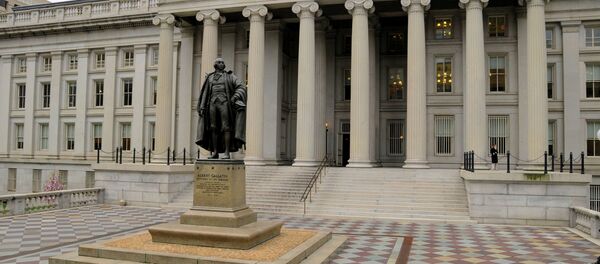Earlier this week, the Associated Press reported that the Bundesbank had completed relocation of 300 tons of gold from the Federal Reserve Bank of New York.
"The transfers were carried out without any disruptions or irregularities," Carl-Ludwig Thiele, a member of the Bundesbank’s Executive Board, was quoted as saying by Bloomberg.
According to the bank, 111 tons of gold were repatriated from the US in 2013. It also returned 105 tons from Paris.
According to data from Marketwatch, by the end of 2016 47.9 percent of Germany’s gold reserves had already been stashed in vaults in Frankfurt, with 36.6 percent remaining in New York, 12.8 percent at the Bank of England in London and 2.7 percent at the Banque de France in Paris.
Valentin Katasonov, a professor at the International Finance Department at the Moscow State Institute of International Relations (MGIMO), suggested that the US disposed of Germany’s gold bars at its own discretion.
"There are a lot of signs that the gold was not physically presented in the New York vaults when Germany called it back. Of course, the US began to return it to Germany but there is one interesting detail. When you leave your suitcase in the luggage storage you expect to get back the same suitcase. But Germany took the wrong 'suitcase,'" Katasonov told Radio Sputnik.
Katasonov explained that the US managed to return the yellow metal thanks to favorable conditions in the precious metal market.
"I think there was a favorable environment in the market and the Americans managed to quickly buy the gold and give it back to Germany. They were not ready for this, but finally managed this replacement," he concluded.
Have you heard the news? Sign up to our Telegram channel and we'll keep you up to speed!




